Lately, I've been receiving a lot of questions referring to the latest studies and research findings, and one question that I receive most queries about concerns the role that stretching plays as part of the warm-up.
Currently, there seems to be a lot of confusion about how and when stretching should be used as part of the warm-up, and some people are under the impression that stretching should be avoided altogether.
This is a very important issue and needs to be clarified immediately. The rest of this article is dedicated to dispelling some common myths and misconceptions about stretching and its' role as part of the warm-up.
What Has Science Got To Say?
Most of the studies I've reviewed attempt to determine the effects of stretching on injury prevention. This is a mistake in itself and shows a lack of understanding as to how stretching is used as part of an injury prevention program and the warm-up.
Stretching and its effect on physical performance and injury prevention is something that just can't be measured scientifically. Sure you can measure the effect of stretching on flexibility with simple tests like the "Sit and Reach" test, but then to determine how that affects athletic performance or injury susceptibility is near impossible.
One of the more recent studies on stretching supports this view by concluding;
To put the above quote in layman's terms; there hasn't been enough studies done and the studies that have been done are not specific or consistent enough. For the most comprehensive assessment and conclusion of research done on the affects of stretching I suggest you have a read through the following article, "The Truth about Stretching".
The Greatest Misconception
Confusion about what stretching accomplishes, as part of the warm-up, is causing many to abandon stretching altogether.
The key to understanding the role stretching plays can be found in the following sentence, but you'll have to read it carefully.
Stretching is Only Part Of The Warm-Up!
Here's the key: Stretching is a critical part of the warm-up, but stretching is not the warm-up itself!
Don't make the mistake of thinking that doing a few stretches constitutes a warm-up. An effective warm-up has a number of very important key elements, which work together to minimize the likelihood of sports injury and prepare the individual for physical activity.
Identifying the components of an effective and safe warm-up, and executing them in the correct order is critical.
Remember, stretching is only one part of an effective warm-up and its' place in the warm-up routine is specific and dependant on the other components.
The four key elements that should be included to ensure an effective and complete warm-up are:
The General Warm-Up
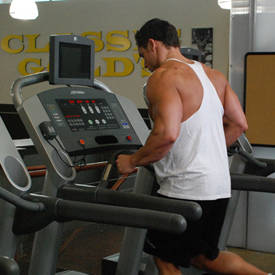
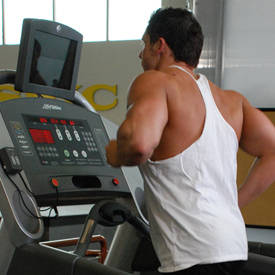
Jogging-Treadmill
This phase of the warm-up consists of 5 to 15 minutes of light physical activity. The aim here is to elevate the heart rate and respiratory rate, increase blood flow and increase muscle temperature.
Static Stretching

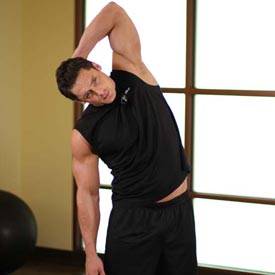
Standing Lateral Stretch
Next, 5 to 15 minutes of gentle static stretching should be used to gradually lengthen all the major muscle groups and associated tendons of the body.
The Sports Specific Warm-Up

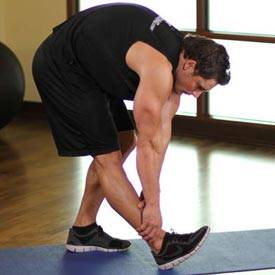
Runners Stretch
During this phase of the warm-up, 10 to 15 minutes of sport specific drills and exercises should be used to prepare the athlete for the specific demands of their chosen sport.
Dynamic Stretching
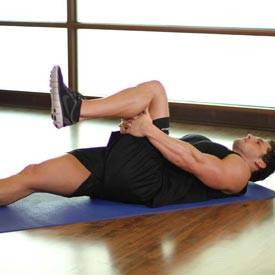
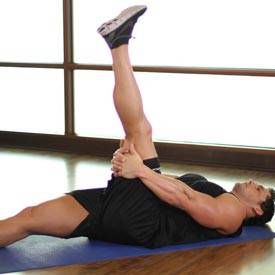
90/90 Hamstring
Dynamic stretching involves a controlled, soft bounce or swinging motion to force a particular body part past its usual range of movement. The force of the bounce or swing is gradually increased but should never become radical or uncontrolled.
All four parts are equally important and any one part should not be neglected or thought of as not necessary. All four elements work together to bring the body and mind to a physical peak, ensuring the athlete is prepared for the activity to come.
Conclusion
So, what conclusions can we make?
Stretching is beneficial, when used correctly. However, as with most activities there are rules and guidelines to ensure that they are safe, and stretching is no exception. Stretching can be extremely dangerous and harmful if used incorrectly.
Remember, stretching is just one very important component that assists to reduce the risk of injury and improve athletic performance. The best results are achieved when stretching is used in combination with other injury reduction techniques and conditioning exercises.
For more information and articles on stretching, flexibility, and sports injury, visit "The Stretching & Sports Injury Newsletter", at www.TheStretchingHandbook.com.
References
- Weldon, S.M. & Hill, R.H., "The Efficacy of Stretching for Prevention of Exercise-related Injury: a Systematic Review of the Literature", 2003.

Note
Dynamic stretching carries with it a high risk of injury if used incorrectly. Dynamic stretching is more for muscular conditioning than flexibility and is really only suited for professional, well trained, highly conditioned athletes. Dynamic stretching should only be used after a high level of general flexibility has been established.